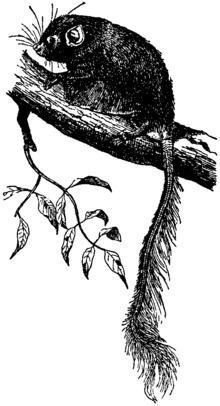Family Anomaluridae Scientific name Idiurus Rank Genus | Phylum Chordata Suborder Anomaluromorpha Subfamily Zenkerellinae Higher classification Anomalure | |
 | ||
Lower classifications Pygmy scaly‑tailed flying squ, Long‑eared flying mouse | ||
The flying mice, also known as the pygmy scaly-tails, pygmy scaly-tailed flying squirrels, or pygmy anomalures are not mice, not squirrels, and are not capable of true flight. These unusual rodents are essentially miniaturized versions of anomalures and are part of the same sub-Saharan African radiation of gliding mammal.
Contents
Characteristics
These animals resemble mice with gliding membranes and long, sparsely-haired tails. Their appearance is similar to some marsupial gliders. They are less than 10 cm (4 inches) in head and body length and weigh 14-35 grams (1/2 - 1.2 oz).
Flying mice are nocturnal and are found in the poorly explored tropical forests of central (and to a lesser extent western) Africa. Little is known of their habits as a result. It has been suggested that one or both species may live in colonies of dozens of individuals. Bats may also be found sharing these tree-hollow colonies.
